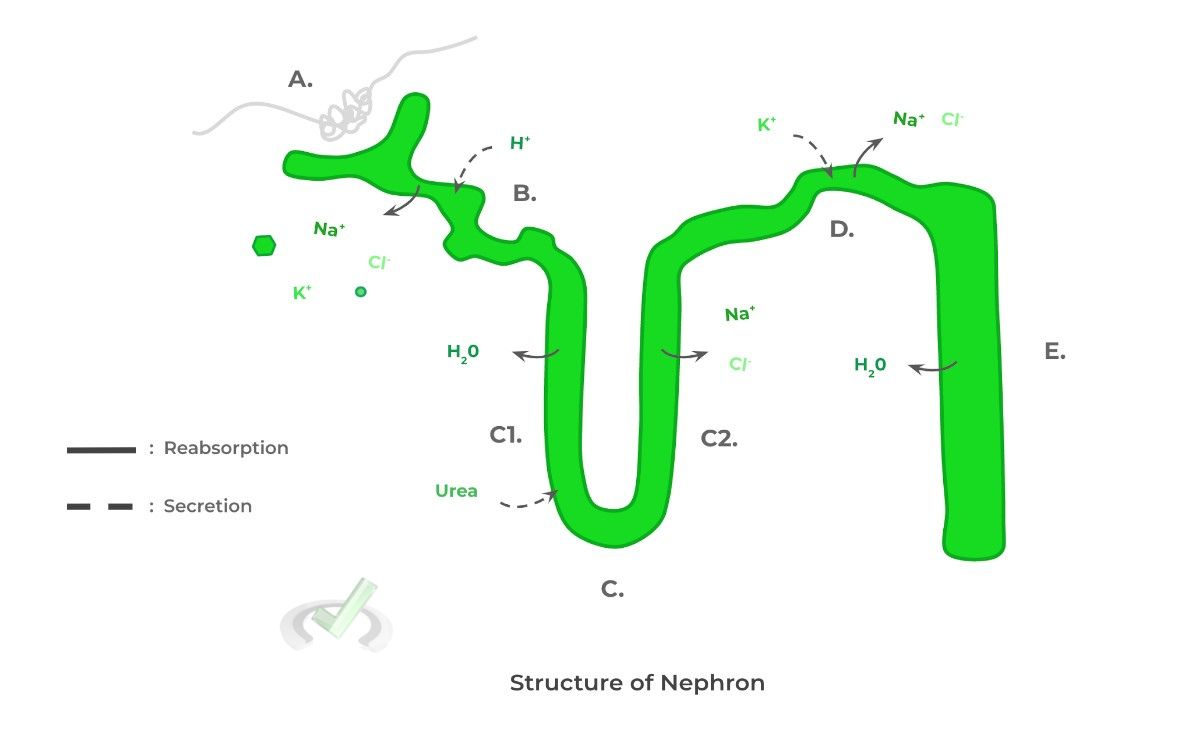Excretory Systems on the MCAT MedLife Mastery Biology Diagrams Learn about the basic unit of kidney function, the nephron, and its components: glomerulus, tubule, and loop of Henle. Understand how nephrons filter, reabsorb, and secrete substances in the urine, and how they adapt to different environments.

Learn about the anatomy and functions of the nephron, the basic unit of the kidney. The nephron consists of a renal corpuscle, a renal tubule, and a juxtaglomerular apparatus that perform filtration, reabsorption, and secretion. A nephron is the basic unit of structure in the kidney that filters blood, removes waste and conserves water. Learn how nephrons work, their structure and function, and how they differ among vertebrates. A nephron is the microscopic structural and functional unit of the kidney that filters blood plasma and produces urine. It consists of a renal corpuscle with a glomerulus and a Bowman's capsule, and a renal tubule with five segments that reabsorb, secrete and excrete substances.

Kidney Function: Nephron Structure and Regulatory Processes Biology Diagrams
Learn about the basic functional unit of kidneys, nephron, and its structure and functions. Find out the parts of nephron, such as renal corpuscle, renal tubule, and collecting duct, and how they contribute to urine formation and excretion. Learn about the unit of structure and function in the kidney, the nephron, and its components: renal corpuscle, renal tubule, and collecting tubule. See how nephrons filter blood, regulate blood pressure, control electrolytes, and maintain pH balance.

The renal tubule is a long and convoluted structure that emerges from the glomerular capsule and can be divided into three parts based on function.The first part is called the proximal convoluted tubule (PCT) due to its proximity to the glomerulus; it stays in the renal cortex. The second part is called the loop of Henle, because it forms a loop (with descending and ascending limbs) that goes The nephron is the microscopic, functional unit of the kidney, responsible for filtering blood and forming urine. Each kidney contains approximately 1 to 1.5 million nephrons. Nephrons are primarily located in the cortex and medulla of the kidney. The renal corpuscle, which includes the glomerulus and Bowman's capsule, is located in the cortex, while the
